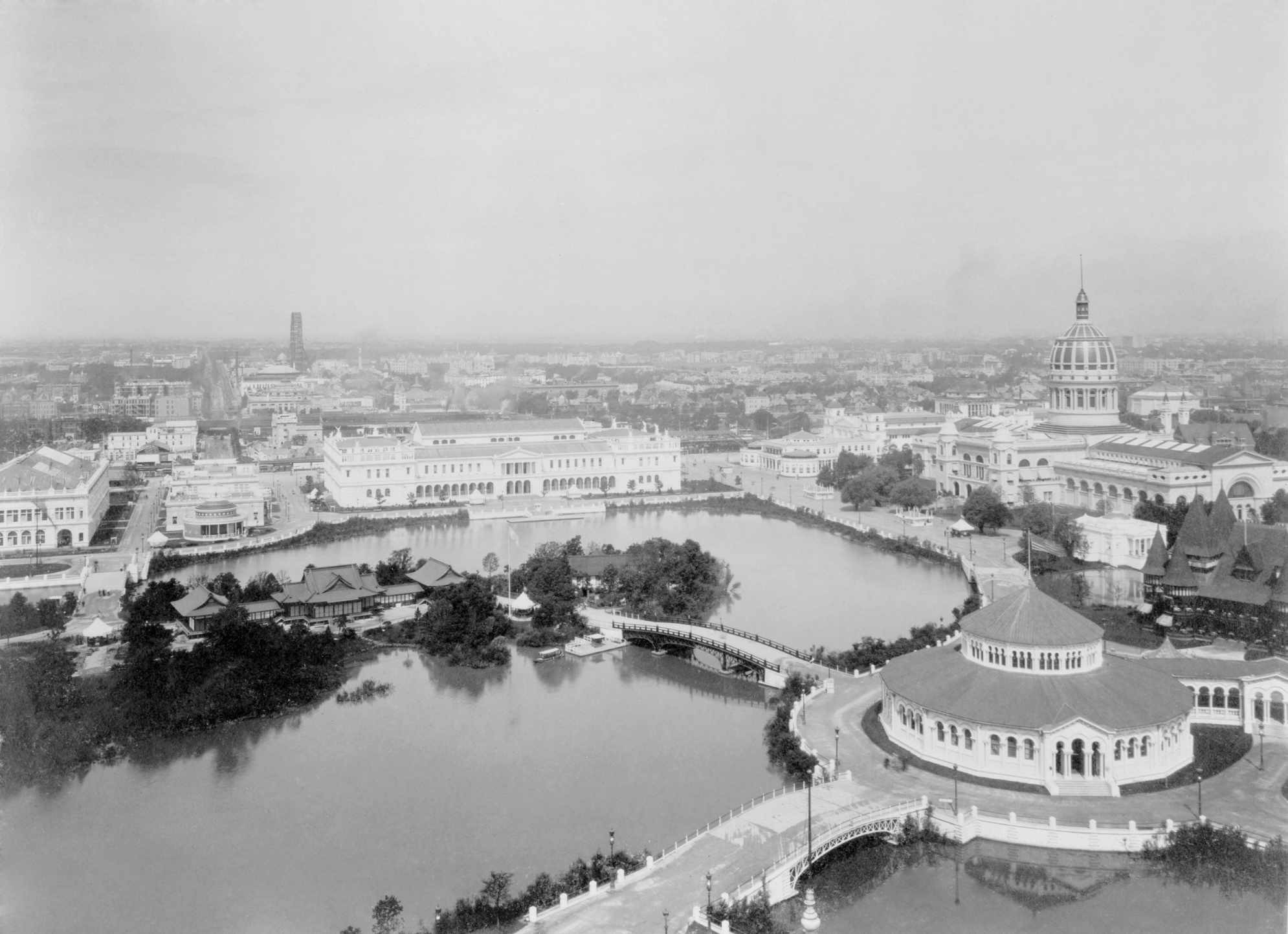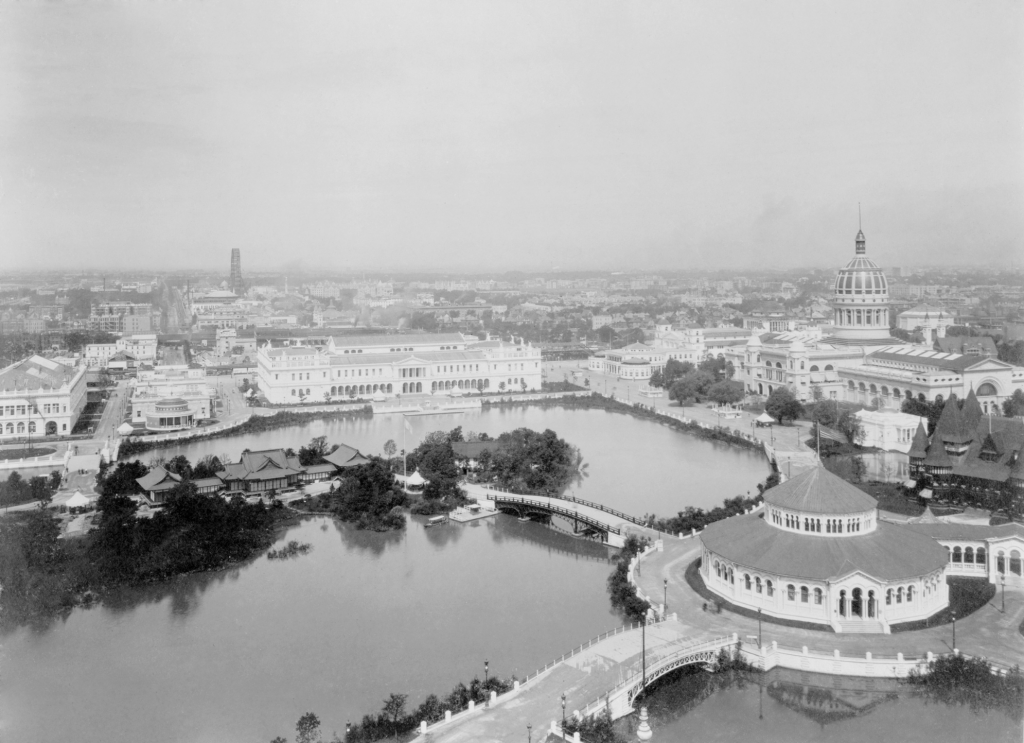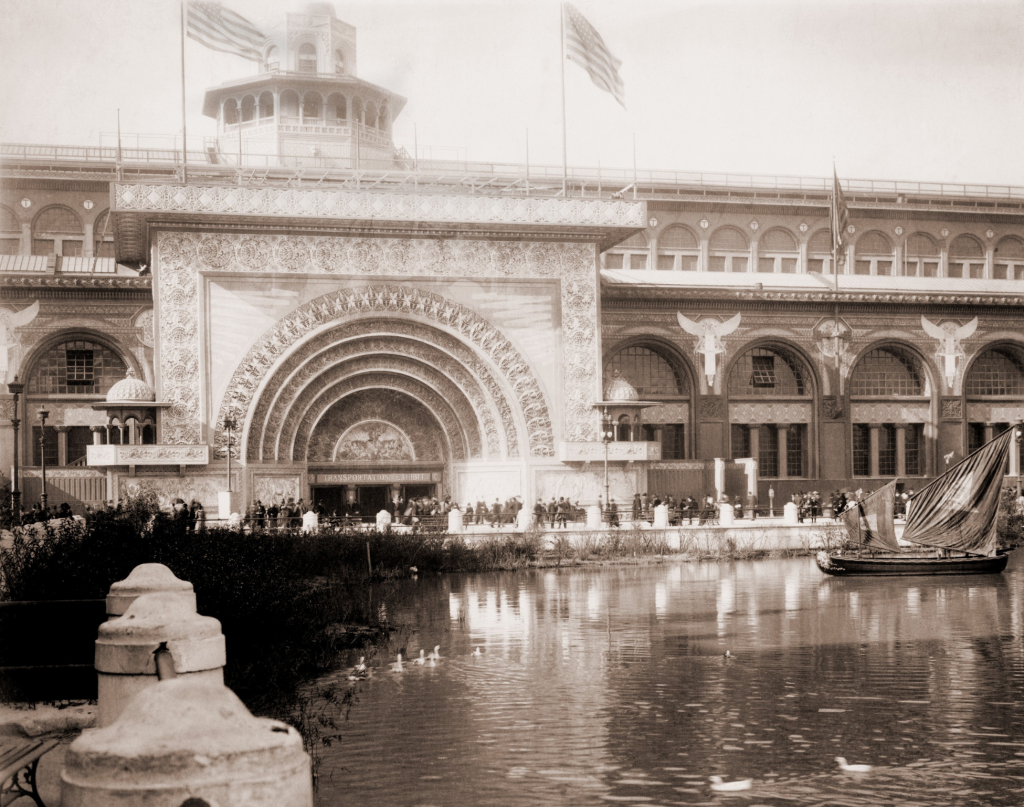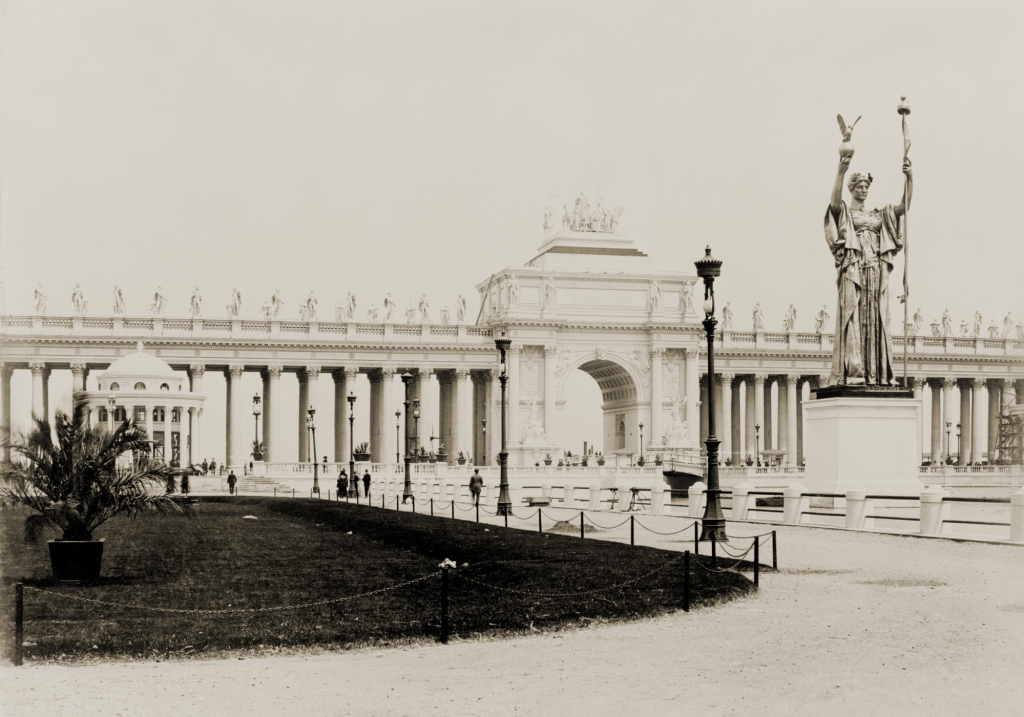
How the 1893 World’s Columbian Exposition Put Chicago on the Map and Shaped America
Published on May 4, 2023
Many were shocked when, in 1890, Chicago beat out New York City for the right to host the 1893 World’s Columbian Exposition.
By Dave Lifton (@daveeatschicago)
Even though it was the second-largest city in the country with a population of 1.1 million people, the national perception of Chicago was that it was chaotic and violent, filled with striking factory workers and unsophisticated butchers whose work at the Union Stock Yards polluted the air with the stench of rotting carcasses.
And there was also the fact that, about 20 years earlier, the Great Chicago Fire wiped out a good chunk of the city.
But thanks to its central location, swaths of undeveloped land, railroad accessibility, and wealth, Chicago got the nod, which commemorated the 400th anniversary of Christopher Columbus’ voyage to the New World. Frederick Law Olmsted and Daniel Burnham turned the South Side’s Jackson Park into the “White City,” with gleaming, white neoclassical buildings that showed off the natural beauty of Lake Michigan as well as the lagoons and grounds created for the fair.

The 28 million people who attended discovered that Chicago wasn’t a place where striking factory workers fought livestock on the rubble-strewn streets, but a beautiful, vibrant city. Although the World’s Columbian Exposition wasn’t without its hiccups–its key attraction got off to a late start and Mayor Carter Harrison Sr. was killed two days before the fair closed, for example–it singlehandedly changed how Chicago was viewed by the rest of the United States.
Another reason for the fair’s success was that it gave visitors a glimpse of emerging technologies, innovative concepts, and foods, many of which have become part of our daily lives. Here are some of them.
Foods: Arguably, the products most closely associated with either debuting or receiving national exposure at the World’s Columbian Exhibition were the foods. This includes the brownie, Cracker Jack, four breakfast products made by milling wheat (Quaker Oats, Cream of Wheat, Shredded Wheat, and Aunt Jemima pancake mix), Wrigley’s Juicy Fruit gum, and Pabst Blue Ribbon beer.
The Midway: While the White City focused on art, science, and culture from around the globe, the Midway Plaisance, a mile-long strip of land that connects Jackson and Washington Parks, was mostly devoted to more lowbrow pleasures. The idea of devoting a strip of carnivals, fairs, and theme parks to games and concessions spread around the country, and it became known as the “Midway.”

Ferris Wheel: In the center of the Midway Plaisance was the world’s first Ferris Wheel, which rose 264 feet above the fairgrounds and had 36 gondolas that held 60 people each. It was the brainchild of engineer George Washington Gale Ferris, who proposed it as a response to the Eiffel Tower, which premiered at the 1889 Paris Exposition. Called the “Chicago Wheel,” it wasn’t completed until a month into the fair, but once it opened it was a huge success, and one of the main reasons the fair turned a profit.
Dishwasher: Tired of having her fine china chipped by her servants, a socialite from Shelbyville, Ill., named Josephine Cochran invented a machine that used water pressure instead of scrubbers. She received a patent for it in 1886 and unveiled her creation in Machinery Hall, where it won the highest prize for “best mechanical construction, durability, and adaptation to its line of work.” The dishwasher could clean 240 dishes in two minutes, and Cochran soon began receiving orders for her machine from hospitals, colleges, and hotels.

Zipper: Whitcomb L. Judson’s designed what he called a “clasp locker” for shoes and debuted it at the World’s Columbian Exhibition. It wasn’t a success, but his Universal Fastener Company kept refining it. By 1917, Universal’s head designer, Gideon Sundback, had patented the “separable fastener,” and it first started to be called the “zipper” around 1923, and used on clothes in the 1930s.
And it wasn’t just what was on display at the fair that changed America. Three visitors to the World’s Columbian Exposition took inspiration from what they saw and applied it to their work. A Pennsylvania caramel manufacturer named Milton Hershey saw an exhibition from a German chocolatier named J.M. Lehmann. Hershey decided right there to pivot to chocolates and bought the equipment from Lehmann after the fair. Henry Ford saw the way animals were butchered at the Union Stock Yards—via disassembly line—and reversed the process to build automobiles. Lastly, a Chicago-based writer named L. Frank Baum reportedly based the Emerald City in his Wizard of Oz books on what he saw at the White City.
There’s no doubt that few events define shape 20th century American life and beyond more than the 1893 World’s Columbian Exhibition.

The Adventure starts when you say it does.
All eATLAS Adventures are designed and built by experienced eATLAS Whoa!Guides. They're always on. Always entertaining. And always ready to go.
Check out our Adventures!